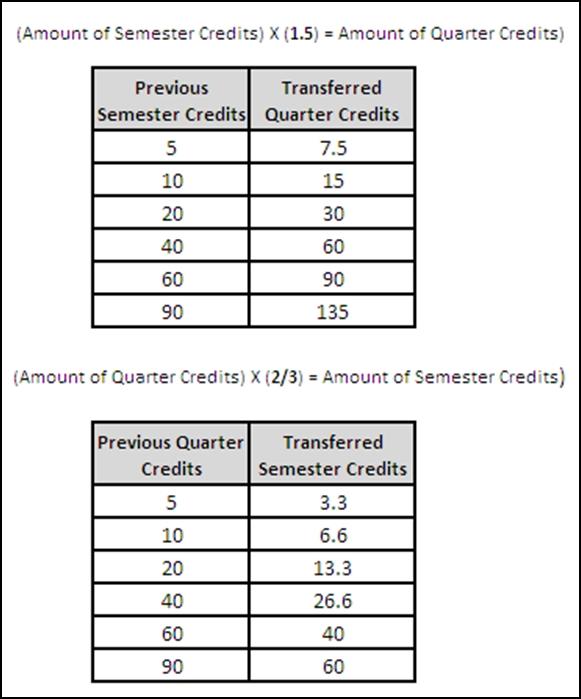
The path you take to earn a college degree is unique for everyone. The “traditional” way to complete your degree no longer exists as more and more adults head back to school to complete their degrees.
Did you know about one-third of student’s today transfer colleges at least once along the way toward finishing their degree? If you are one of these transfer students you may find transferring your credits into a new school can get confusing at times; especially when transferring between institutions that use different academic systems.
In order to avoid confusion when you are moving credits from a semester system into a quarter system (or vice versa) there are a few things you need to know in order to get started again and complete your degree.
Semesters and Quarters: Two Different Academic Systems
Institutions of Higher Education typically use one of two common systems to schedule classes and award credit throughout the calendar year: Quarters and Semesters.
In a quarter system students typically attend classes for four “quarters” each year, often year round. In some cases quarters vary in length, although the typical quarter lasts 10 or 11 weeks.
Meanwhile, in a semester system students typically attend classes for two “semesters” each year, typically a fall semester and a spring semester. Length of these terms can also vary and in many cases a shortened 3-4 week session is held in the month of January, often called “J-Term”.
Both academic systems enable students to graduate in two or four years depending on the school, course load, and program of study. With these scheduling differences the amount of credits earned per course may differ within the two academic systems. This subtle difference often causes the most confusion during the transfer process.
Credit Conversion
When you are transitioning into a semester or quarter system that differs from the one used at your previous school, your credits will need to be converted in order to fit your new school’s credit requirements.
According to Rasmussen College Campus Registrar, Samantha Williams, “Although the conversion rates below are used by most schools, each school may convert your credits at a slightly different rate. It is up to the school you are transferring into to review and convert your previously earned credits in order to determine the amount of credits you will would be awarded when entering their system.“
For example, the table below should help you visualize how a school may convert your credits when moving between a semester vs. quarter system or vice versa.

While it may appear by converting your credits you are losing credits when transferring into a semester vs. quarter system or gaining them when entering a quarter vs. semester system, it’s important to remember the amount of credits needed to earn your degree will also differ between systems. The conversion ratios have been developed to ensure a fairly smooth way to transfer your credits between the two systems.
How to Transfer Your Credits Successfully
Even if you haven’t taken a college course in years, if you are starting back up at a new school, transferring your credits is a smart way to save time and money. As you prepare to transfer your credits, first get a copy of your unofficial transcriptsfrom your previous institution and begin reviewing the credit transfer policies and process with the appropriate person at your new school. The amount of credits accepted will impact the time necessary to finish your degree. Every school’s review of your credits may differ, so finding a new school that transfers the largest amount toward completing your bachelor’s degreeis an important consideration.
By now you should have a greater understanding of the credit transfer process when moving from semesters into quarters or vice versa. Not only does transferring your previous credits save you time by not having to retake classes, but it will also save you money by utilizing credits you’ve already paid for. I hope your transfer process goes smoothly as you take the next step toward becoming a college graduate.
For questions specific to your personal situation, be sure to contact your school directly.




![What Did You Want to Be When You Grew Up? [Survey]](/images/rasmussenlibraries/blogs/newscenter/2014/college-life-when-i-grow-up-blog-m.jpg)
